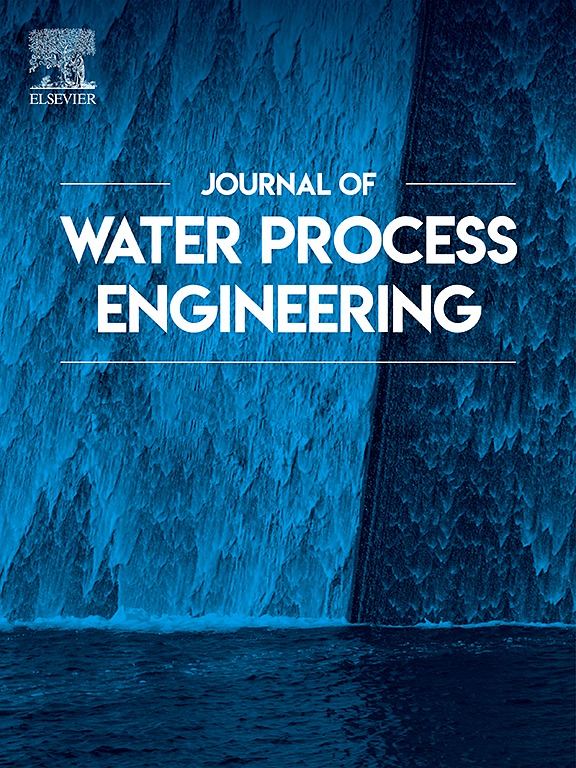Hybrid electron donor-driven partial denitrification coupled with anammox process for the treatment of high-concentration ammonium nitrate wastewater: Element transformation and microbial community structure
IF 6.3
2区 工程技术
Q1 ENGINEERING, CHEMICAL
引用次数: 0
Abstract
In this study, a mixotrophic nitrogen removal system integrating sulfur-oxidizing autotrophic denitrification, heterotrophic denitrification and anammox was established for the treatment of high-strength ammonium nitrate wastewater. After 170 days of continuous cultivation, the total nitrogen removal rate achieved 1.05 ± 0.05 kg N/(m3·d), with remarkable nitrogen removal efficiency of 88.09 ± 3.97 %, and sulfate production effectively reduced to 37.59 ± 5.44 %. In-situ batch test results not only investigate the element transformation in Mixotrophic Partial Denitrification coupled with Anammox, but also indicated that thiosulfate-driven autotrophic denitrification accounted for 88.20 % of nitrate reduction. Thiobacillus and Thermomonas was identified as the predominant sulfur-oxidizing bacteria. The addition of a low concentration of Chemical Oxygen Demand maintained the relative abundance of heterotrophic denitrification bacteria (27.3–35.6 %). Furthermore, the relative abundance of anammox bacteria including Candidatus_Kuenenia and Candidatus_Brocadia constituted 36.2 %. This research provides a stable and efficient treatment process for high-concentration ammonium nitrate wastewater with low carbon-to‑nitrogen ratios.

求助全文
约1分钟内获得全文
求助全文
来源期刊

Journal of water process engineering
Biochemistry, Genetics and Molecular Biology-Biotechnology
CiteScore
10.70
自引率
8.60%
发文量
846
审稿时长
24 days
期刊介绍:
The Journal of Water Process Engineering aims to publish refereed, high-quality research papers with significant novelty and impact in all areas of the engineering of water and wastewater processing . Papers on advanced and novel treatment processes and technologies are particularly welcome. The Journal considers papers in areas such as nanotechnology and biotechnology applications in water, novel oxidation and separation processes, membrane processes (except those for desalination) , catalytic processes for the removal of water contaminants, sustainable processes, water reuse and recycling, water use and wastewater minimization, integrated/hybrid technology, process modeling of water treatment and novel treatment processes. Submissions on the subject of adsorbents, including standard measurements of adsorption kinetics and equilibrium will only be considered if there is a genuine case for novelty and contribution, for example highly novel, sustainable adsorbents and their use: papers on activated carbon-type materials derived from natural matter, or surfactant-modified clays and related minerals, would not fulfil this criterion. The Journal particularly welcomes contributions involving environmentally, economically and socially sustainable technology for water treatment, including those which are energy-efficient, with minimal or no chemical consumption, and capable of water recycling and reuse that minimizes the direct disposal of wastewater to the aquatic environment. Papers that describe novel ideas for solving issues related to water quality and availability are also welcome, as are those that show the transfer of techniques from other disciplines. The Journal will consider papers dealing with processes for various water matrices including drinking water (except desalination), domestic, urban and industrial wastewaters, in addition to their residues. It is expected that the journal will be of particular relevance to chemical and process engineers working in the field. The Journal welcomes Full Text papers, Short Communications, State-of-the-Art Reviews and Letters to Editors and Case Studies
 求助内容:
求助内容: 应助结果提醒方式:
应助结果提醒方式:


